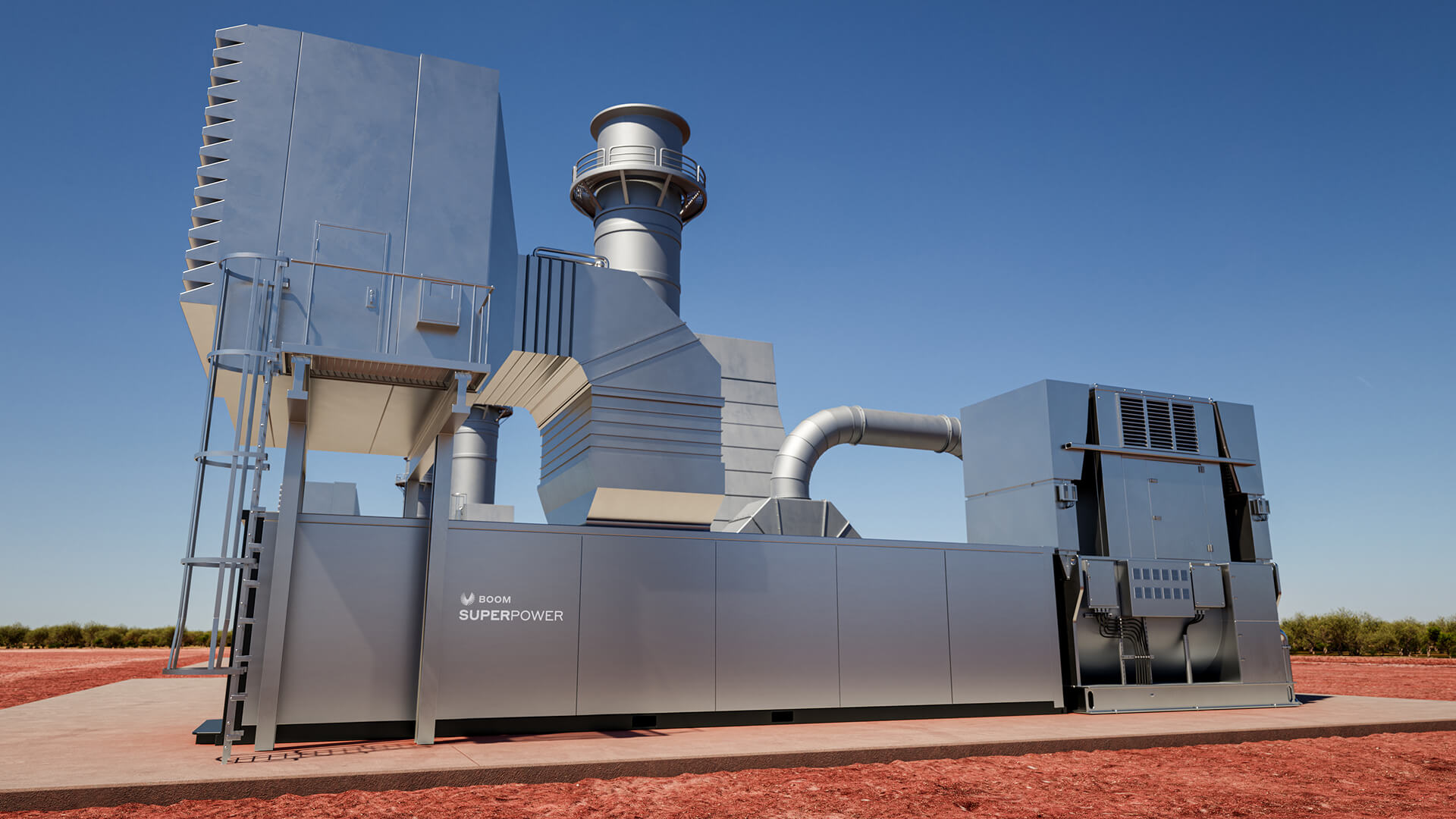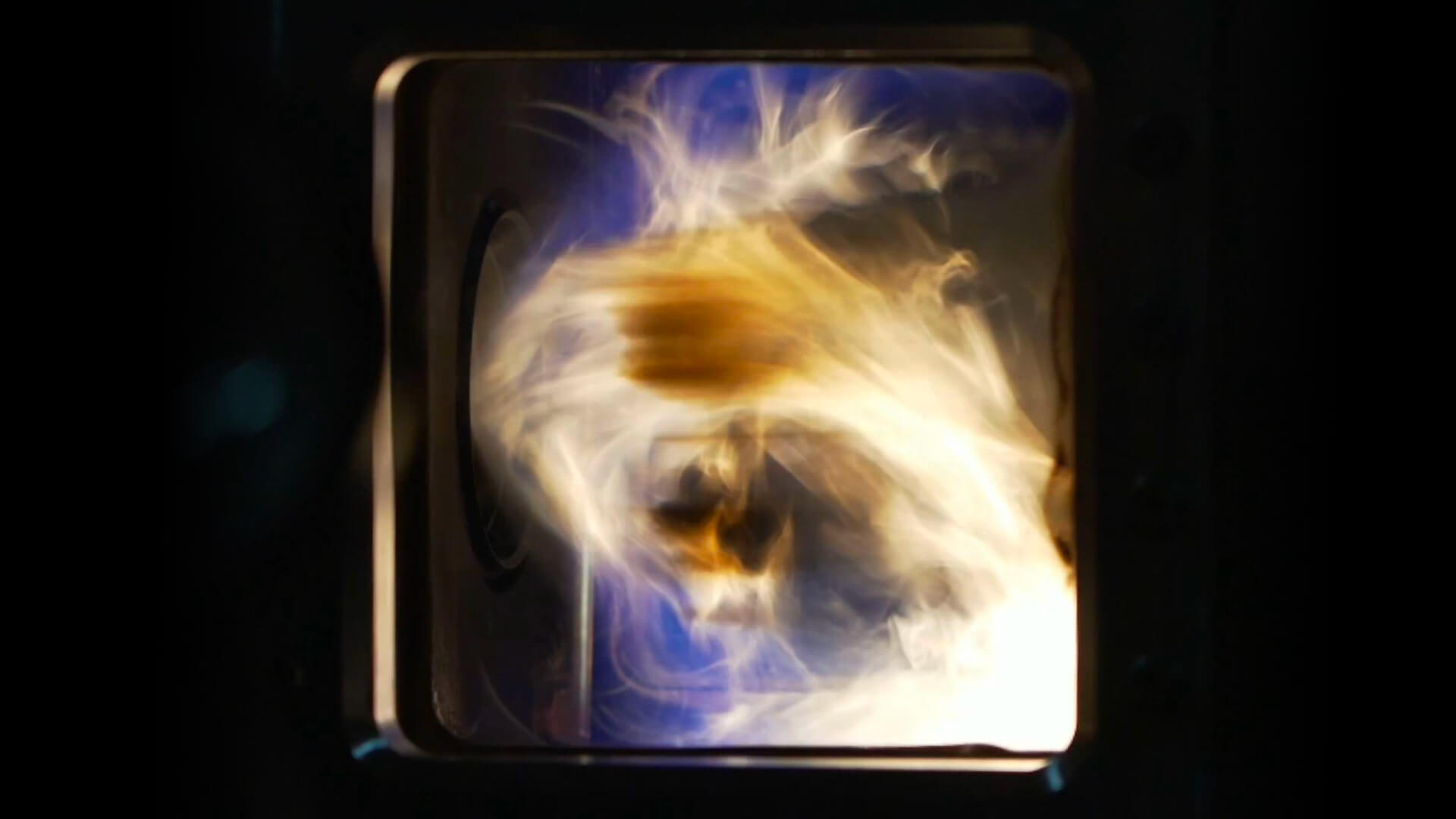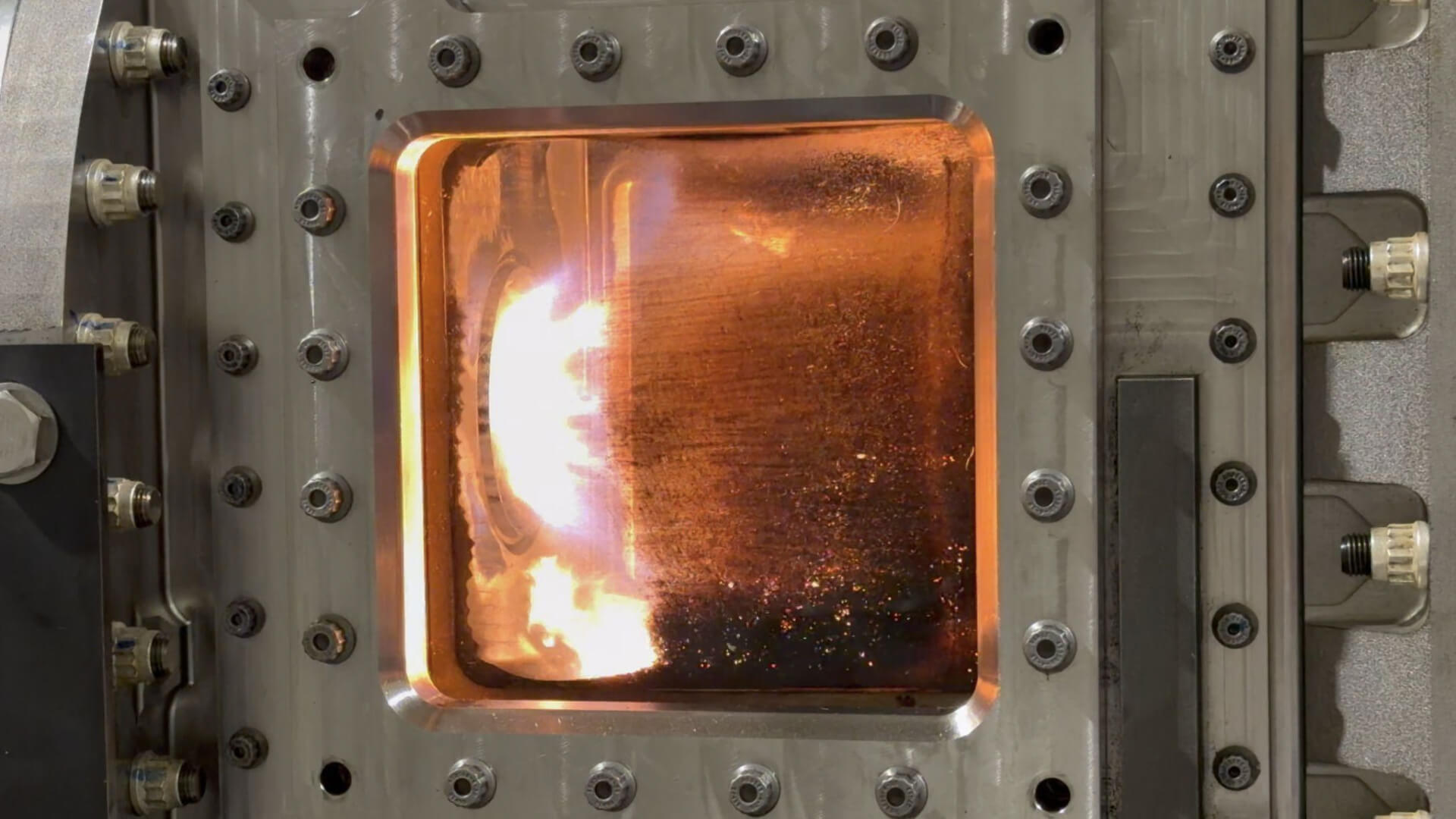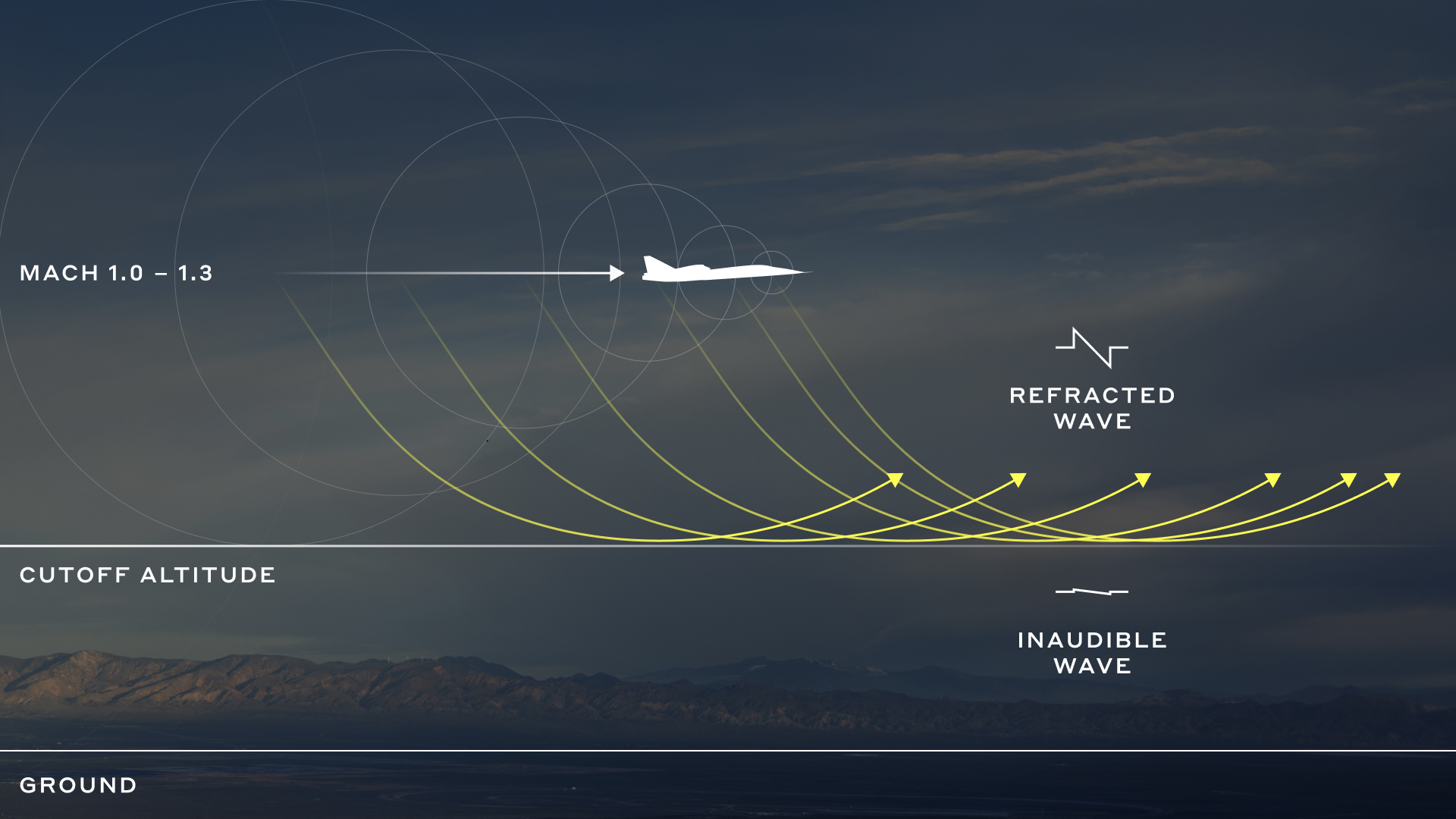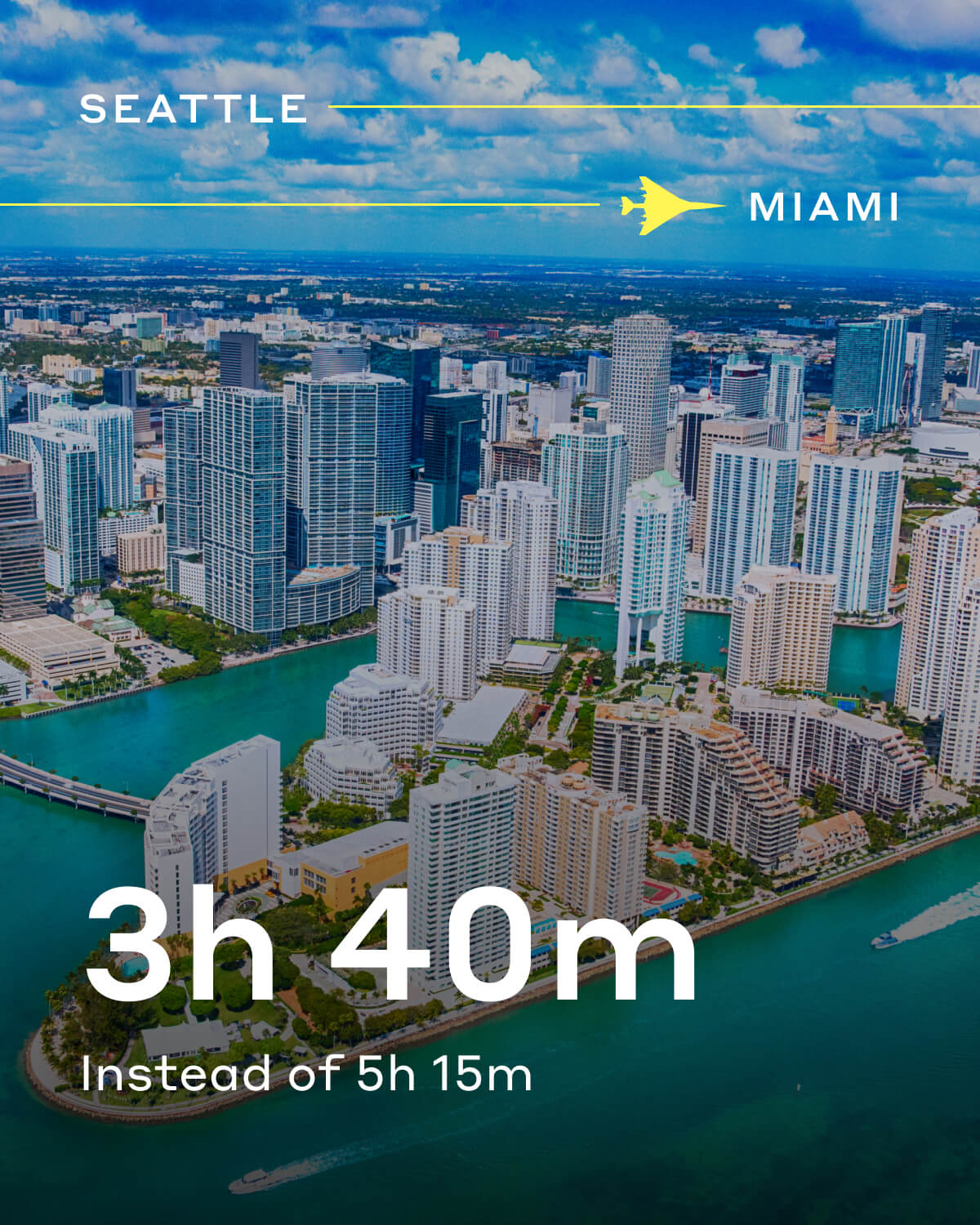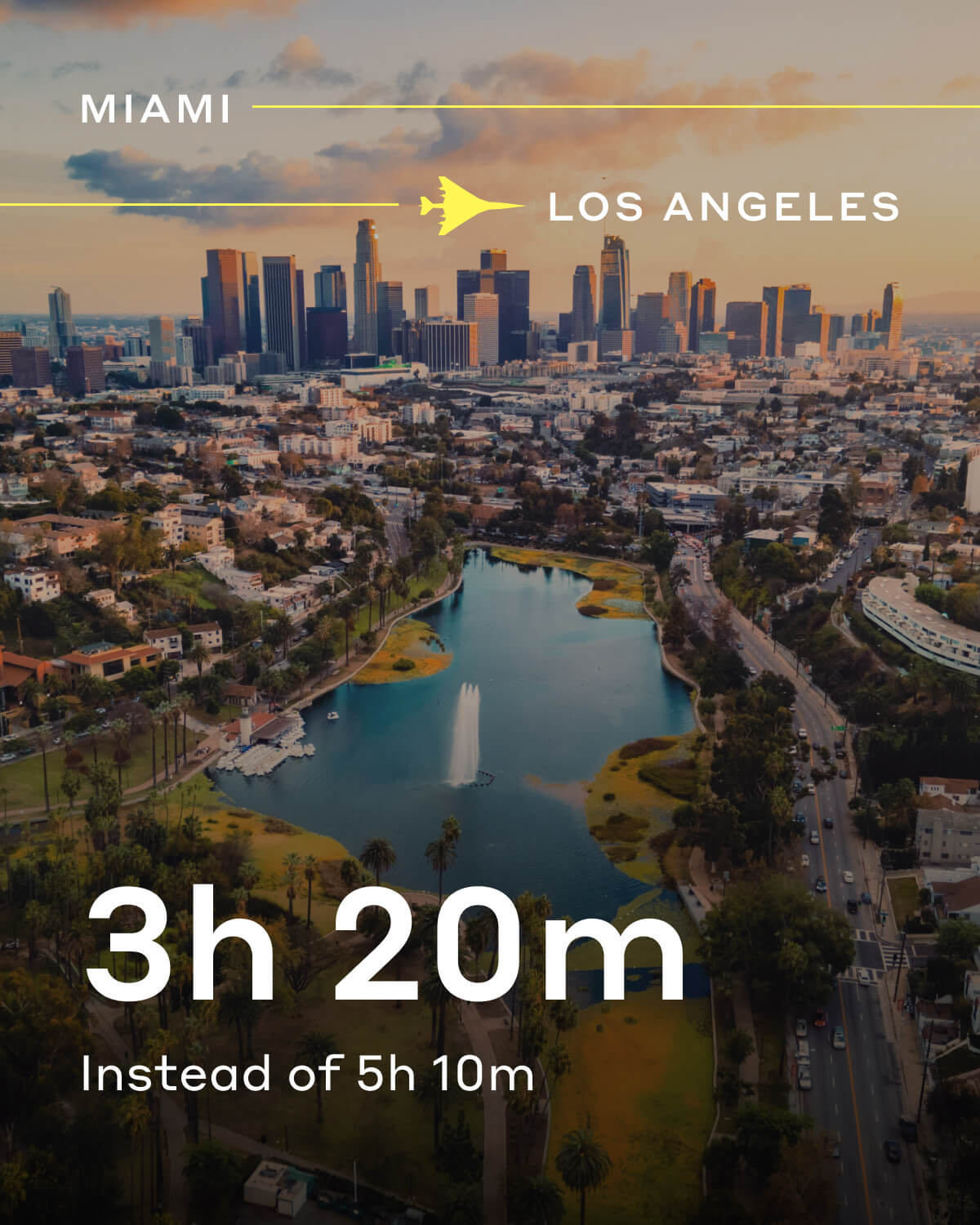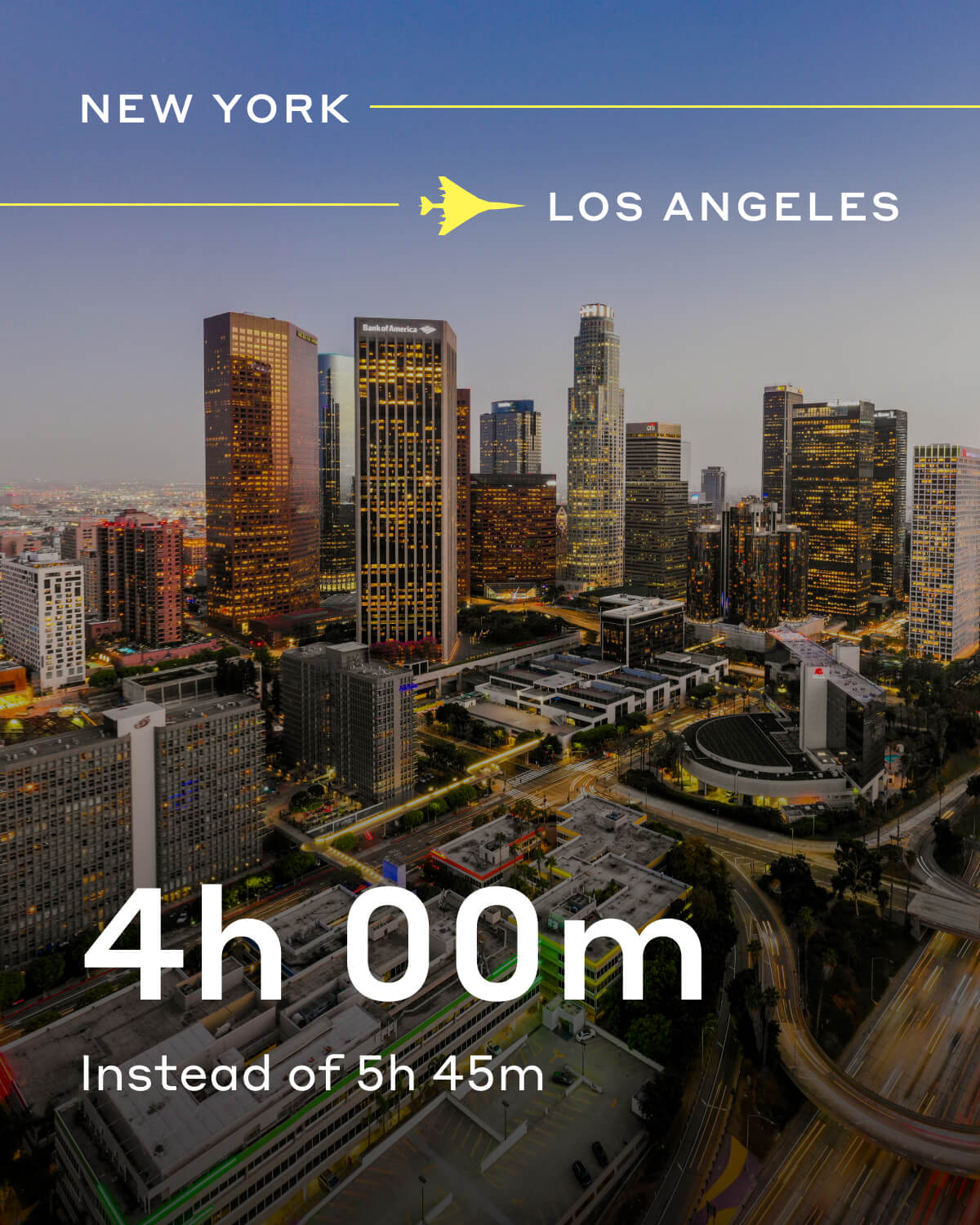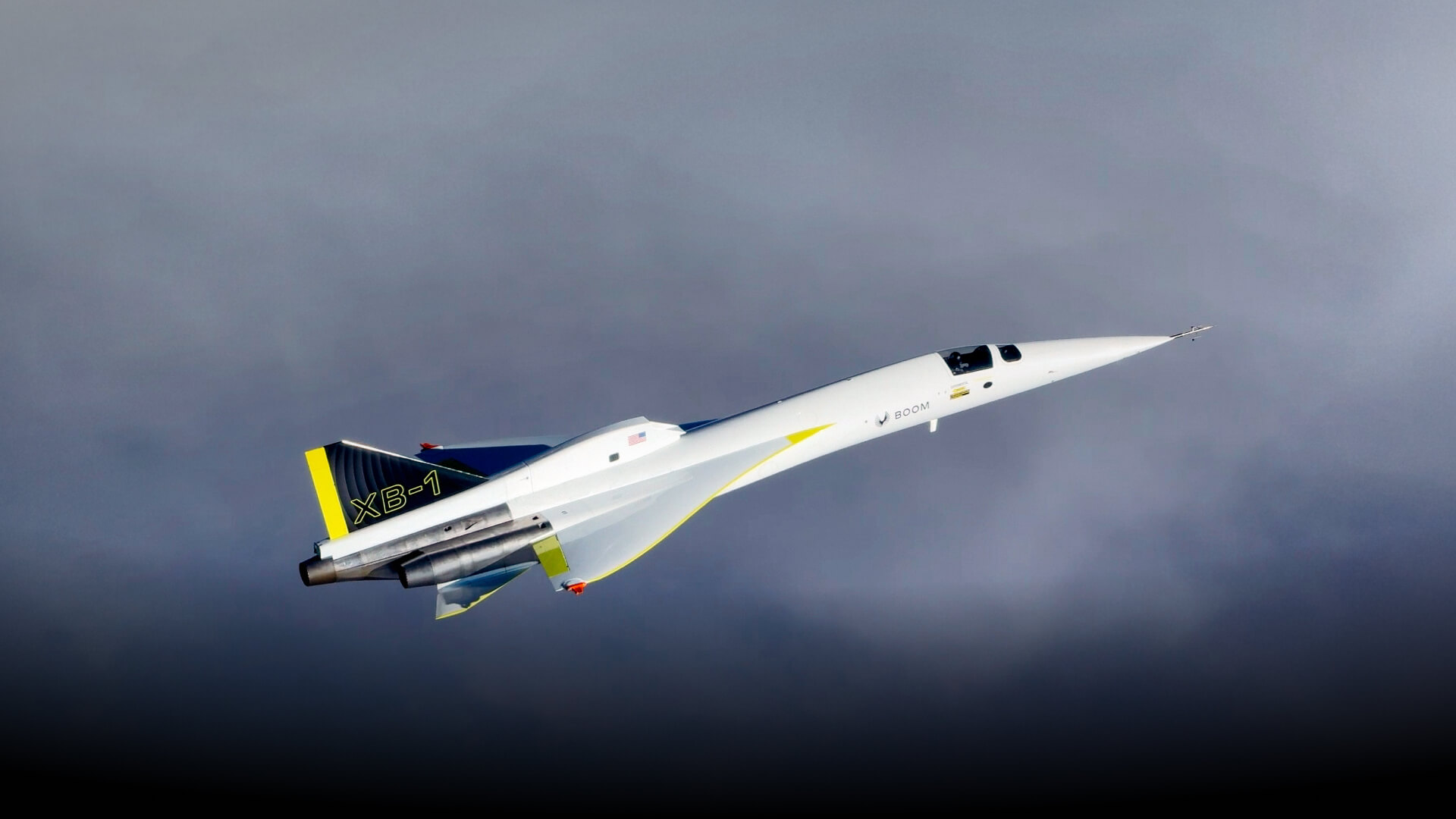
Boomless Cruise
As demonstrated on XB-1, supersonic flight is possible without an audible sonic boom.
The Science
In Mach cutoff, the sonic boom refracts in the atmosphere and never reaches the ground. Exact speeds and altitude vary based on atmospheric conditions.
How does Boomless Cruise work?
Learn why sonic booms don’t reach the ground during Mach cutoff and how this Boomless Cruise capability will be applied to Overture, Boom’s supersonic airliner.
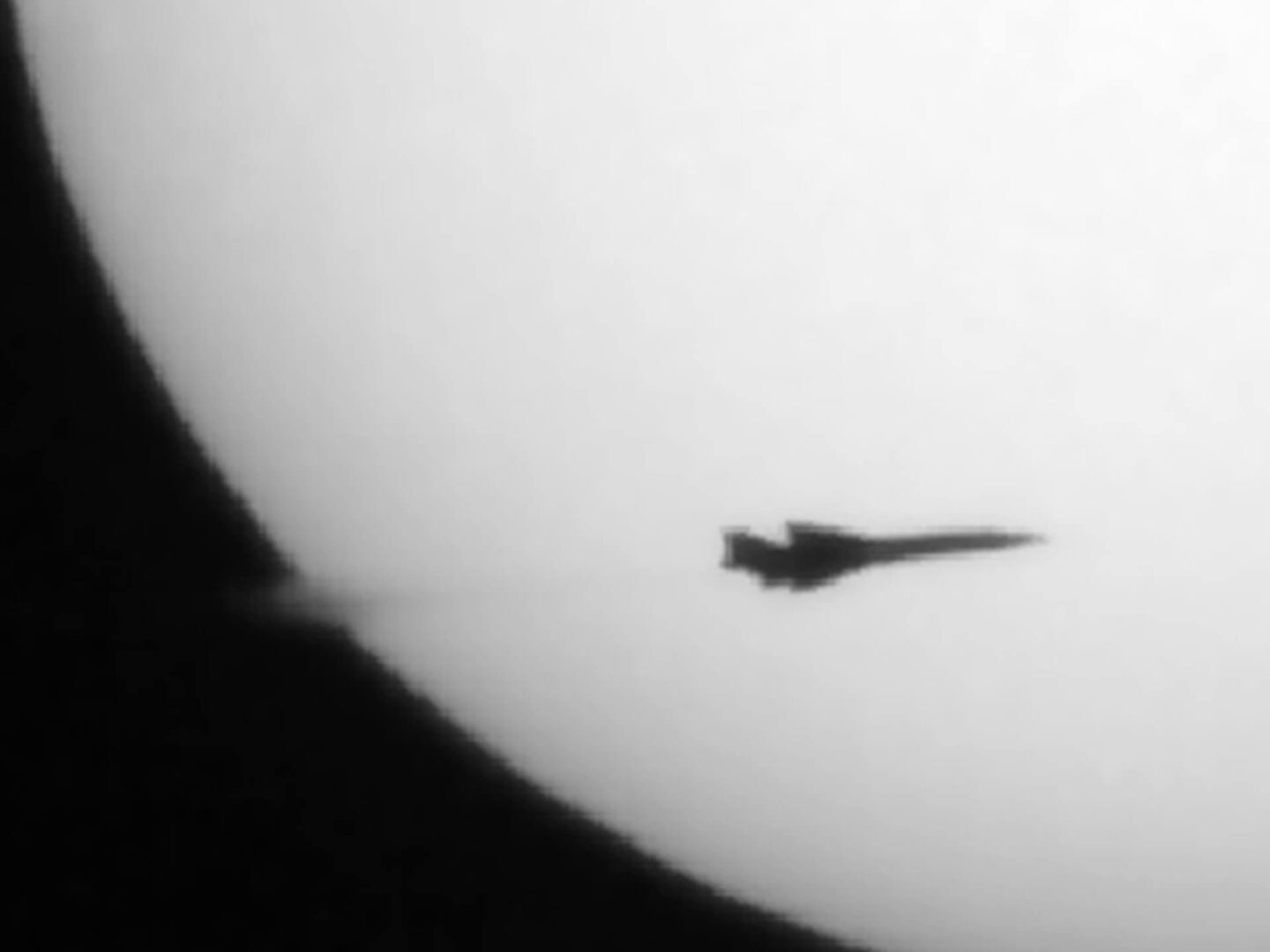
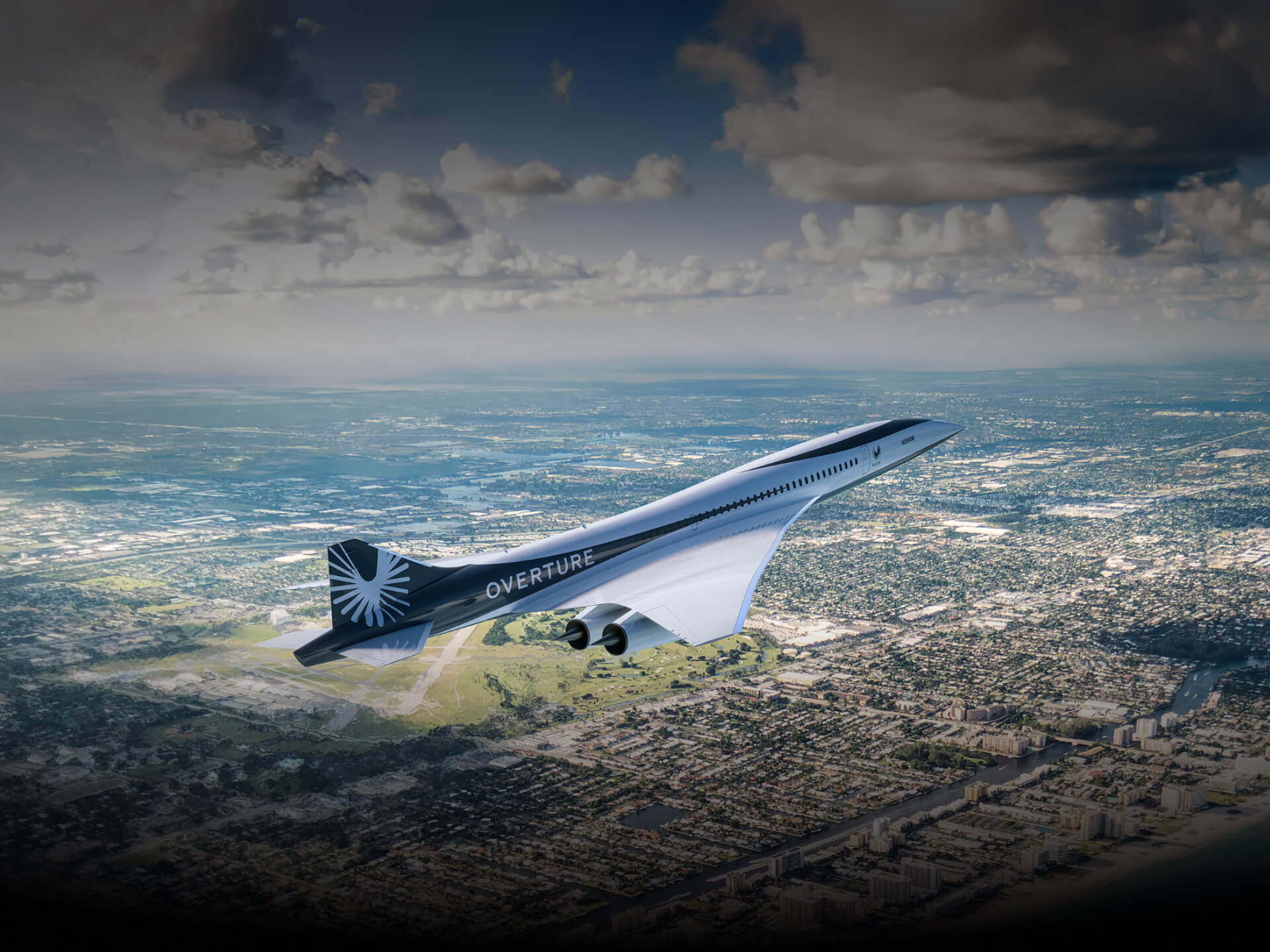
Boomless Supersonic Travel
Boomless Cruise on Overture enables up to 50% faster speeds over land and 2X speed over water.
Frequently Asked Questions
How much faster will boomless flights be?
When in Boomless Cruise, speeds are 40-50% faster than conventional airliners. This means a flight from New York to San Francisco can be 2 hours faster, and a flight from Los Angeles to New York can be less than 3.5 hours. Hybrid routes with overland and overwater segments, such as Chicago to Frankfurt, will also see incremental time savings.
Overture’s advanced autopilot will continuously optimize speed for Boomless Cruise based on real-time atmospheric conditions. Boomless Cruise is possible at speeds up to Mach 1.3, with typical speed between Mach 1.1 and 1.2.
How does Boomless Cruise work?
Boomless Cruise leverages well-known Mach cutoff physics, where a sonic boom refracts upward due to temperature and wind gradients affecting the local speed of sound. This is similar to how light bends when passing through a glass of water. By flying at a sufficiently high altitude at an appropriate speed for current atmospheric conditions, Overture ensures that its sonic boom never reaches the ground.
What design features do XB-1 and Overture incorporate to enable boomless operation?
Unlike “low boom” designs, Boomless Cruise does not require extensive aircraft shaping. Instead, it relies on the ability to break the sound barrier at a high enough altitude where the boom refracts harmlessly away from the ground.
On Overture, Boomless Cruise is specifically enabled by the Symphony engines. These engines feature enhanced transonic performance compared to commercially derived engines, allowing Overture to efficiently transition to supersonic speeds at altitudes above 30,000 feet.
Additionally, Boomless Cruise is enabled by an advanced autopilot which uses current weather conditions and software algorithms to automatically select the optimal speed for Boomless Cruise.
Does this mean Overture is a low boom aircraft?
No, boomless and low boom are distinct concepts. In Boomless Cruise, Overture’s sonic boom does not reach the ground. However, at its full Mach 1.7 speed over water, Overture will generate a sonic boom.
How does Boomless Cruise affect fuel efficiency?
Overture is designed to be most efficient at high subsonic speeds of Mach 0.94 and supersonic speed of Mach 1.7. As aerodynamic drag increases closer to speed of sound, there is a modest increase in fuel burn at low supersonic speeds. Even with this drag penalty, Overture still has plenty of range to fly the longest transcontinental routes, such as Vancouver-Miami.
Was Concorde capable of Boomless Cruise?
Theoretically any supersonic aircraft at the right speed and altitude can be in Mach cutoff. However, Concorde lacked the engine efficiency to fly in Mach cutoff without afterburners, making the range impractical. Additionally in Concorde’s era, the computing power to calculate appropriate speeds and altitudes was not available.
What are example flight times?
With speeds 40-50% faster than conventional airliners, Overture in Boomless Cruise enables passengers to travel from San Francisco to New York in 3 hours 25 minutes instead of just over 5 hours, saving more than 90 minutes. Passengers can leave Washington, DC at 8:00AM EST and arrive in Los Angeles in just 3 hours 40 minutes at 8:40AM PST.
Are there any regulatory barriers to flying in Boomless Cruise over the United States?
Since 1973, FAA regulation 14 CFR 91.817 has prohibited all supersonic flight over land in the U.S., regardless of whether a boom reaches the ground.
On June 6, 2025 President Donald Trump issued and signed an executive order entitled “Leading the World in Supersonic Flight,” effectively lifting the 52-year ban on supersonic flight over the U.S.
Legislation known as the Supersonic Aviation Modernization Act was introduced on May 14, 2025 by Senator Ted Budd (R-NC) in the U.S. Senate and Congressman Troy Nehls (R-TX) in the House of Representatives. This legislation asks the Federal Aviation Administration (FAA) to revise the current ban on civil aircraft exceeding Mach 1, provided that no sonic boom reaches land.
Updating this regulation clears the runway for innovation, secures American leadership in aerospace, and strengthens national security. Boom Supersonic supports revising current regulations to allow supersonic flight that does not create audible sonic booms and to establish a certification pathway for future low-boom aircraft. Learn more about the legislation and executive order.

